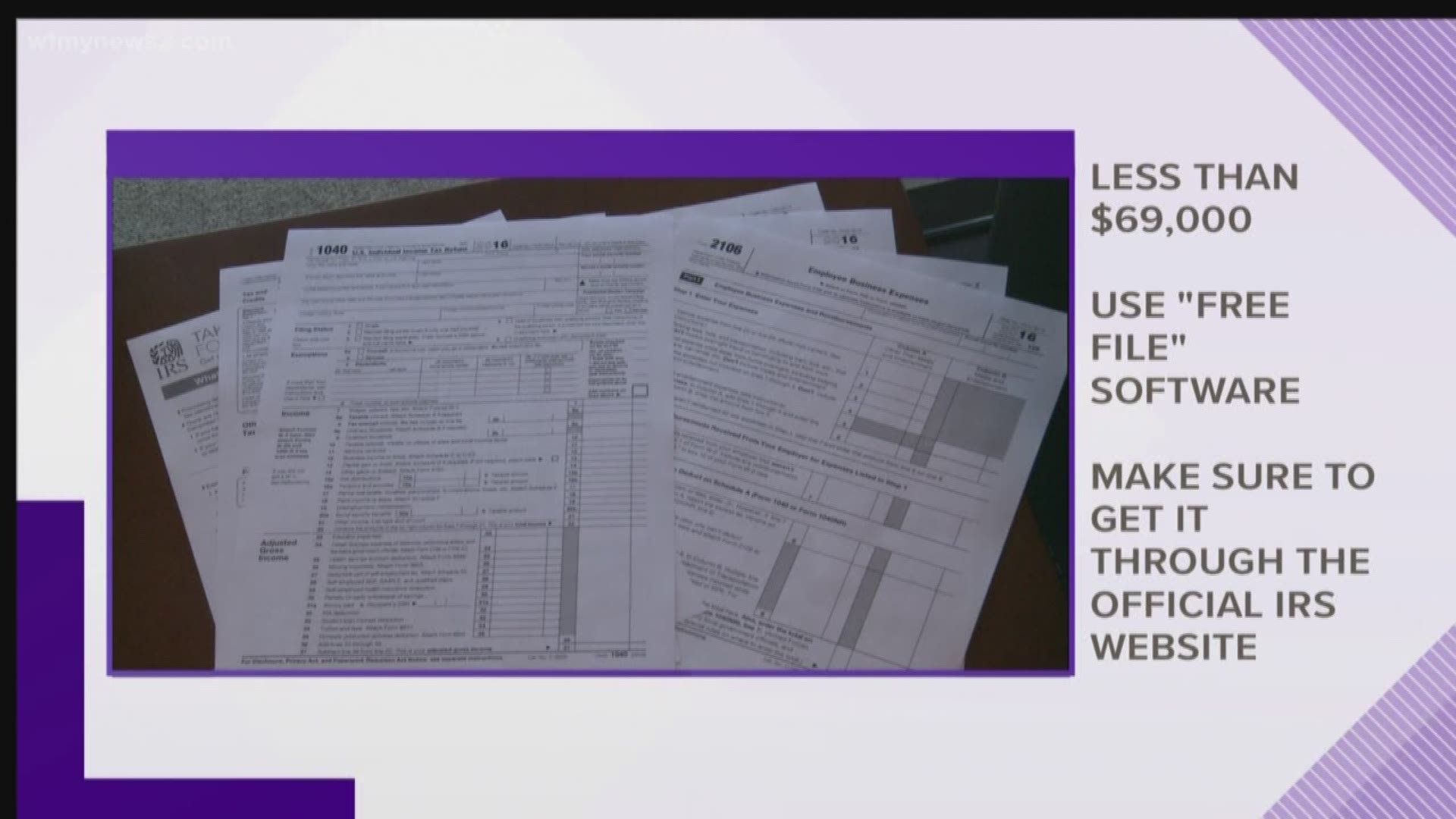Americans spent $11 billion dollars on tax-preparation services last year. Often, that's money down the drain — there are several ways to file your taxes for free, whether electronically or even, in some cases, with the help of an expert. Here's a rundown of the options and how to choose what's best for you.
"Free File" software
If you earn less than $69,000 a year, you can use what's known as "Free File" software. Made available through the IRS in tandem with commercial tax preparers like TurboTax, H&R Block and TaxSlayer, there are 10 products to choose from this year.
Here's the catch: To ensure you won't be charged, it's important to access the software through the IRS' website. Using the tools through other means, including searching online or using an account you set up for free in a previous year, could shift you into a paid product.
Case in point: Last year, ProPublica revealed that Intuit, the maker of TurboTax, concealed its free file product from search engines and pushed low-income taxpayers into a paid version. The company now faces a lawsuit over the alleged scheme. Intuit denies the allegations.
Using the IRS' free file page also makes it easier to find the specific product you're eligible for. While anyone earning less than $69,000 should be able to use at least one free-filing product, each tool has slightly different requirements. For instance, FreeTaxUSA requires your income to be under $36,000, while Free 1040 Tax Return isn't available to people living in Florida, Tennessee, Texas or Washington.
That's why it's a good idea to use the IRS' lookup tool, which asks about your income, age and residence in order to tell you what free software you qualify for. (According to Nina Olson, the National Taxpayer Advocate from 2001 to 2019, the system was designed so that no single tax software could have a monopoly on free tax prep, but it had the inadvertent effect of making free filing complex and more confusing for taxpayers.)
4F: "Free File Fillable Forms"
If you earn more than $69,000 per year, you can still file your taxes without paying — you just can't do it with software. Enter Free File Fillable Forms. This tool is the electronic equivalent of filling out a paper tax return, offering the most common tax forms as PDFs that you can submit electronically.
Unlike tax software, which typically guides you through a series of questions and then uses your answers to populate your return, Fillable Forms will assume you know which of the various documents and forms you need and can do the math yourself.
"That's an option for people who are tax savvy or have very simple returns, and can literally just plug in numbers," Olson said.
If you use Fillable Forms, you'll need to create a new account every year because, for security reasons, the IRS purges information entered into the system at the end of every tax season.
Last year, nearly 280,000 taxpayers used the IRS' electronic forms, while 2.5 million used free file software. Another 17 million filed paper returns — that's also free if you fill out the forms yourself.
If you absolutely must use software, Credit Karma Tax offers completely free tax filing with no restrictions. But the company collects the data you input in order to market financial products to you.
In person: Free tax help for seniors
Although the IRS encourages electronic tax filing, many taxpayers still prefer face-to-face interaction for tax help. The government runs two volunteer-staffed programs to make this possible.
People over age 60 can visit a Tax Counseling for the Elderly (TCE) site. The program has no income limits, and its volunteers are trained to focus on tax issues that affect seniors, such as questions about retirement account withdrawals. Most TCE sites are run through the AARP's Tax Aide program and can be found on its website.
In person: Volunteer income tax assistance (VITA)
Taxpayers with annual income of less than $56,000, can get in-person help at a Volunteer Income Tax Assistance (VITA) site. These neighborhood sites, often run in partnership with nonprofits or community groups, offer IRS-trained volunteers to help with tax filing during most of the tax season. The IRS offers a lookup tool to find sites in your area.
Each site is locally run, so read the details for your chosen site carefully. Take note of:
- The date that site opens
- The hours and days of the week it operates
- Whether an appointment is required
- Whether you can file taxes for multiple years
Whichever option you choose, note that VITA sites aren't for people with complex tax situations. If you have a loss from a business, for instance, or if you have complicated capital gains or losses, these clinics probably aren't right for you. The IRS offers guidelines on what kinds of tax help volunteers can offer, as well as what documents to bring.

